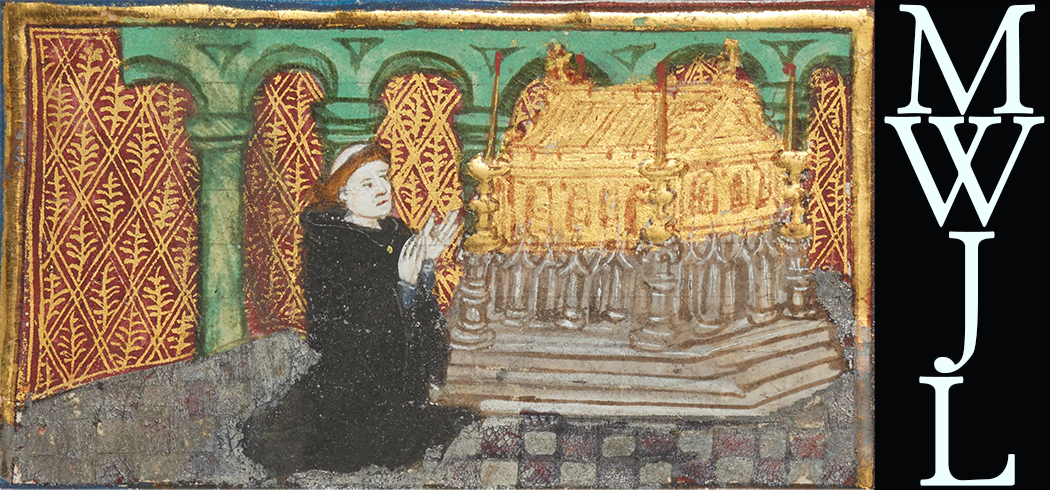 Quis Dabit Meo Capiti Fontem Lacrimarum:
Long Melford Verses
Quis Dabit Meo Capiti Fontem Lacrimarum:
Long Melford Verses
HomeAbout the ArchiveAbout John LydgateWorksManuscriptsAbout this ManuscriptEditorial ApparatusContactVisualization
Fifth Panel
Compare Witnesses: •
Notes
-
Unfortunately, this panel is very badly damaged and many of the letters are simply too damaged to discern. Nevertheless, the fourth letter of the first word is “e,” making the third letter “t” from context. The descender for “h” and “y” and the top and bottom of the short “s” can be seen in the fifth word. The bottom portion of the minims, as well as the otiose mark the scribe uses for “t” can be seen on the seventh word. Interestingly, it appears that the fourth word began with “b” or “o” rather than the “i” of “in” based on the remnants of a rounded bottom and the bottom of a minim visible on the panel, but with the damage to the line determining which word the scribe intended cannot be done. ↩
-
The “w” and the unique “or” ligature can be seen at the beginning of the sixth word. The rest of the word is supplied by context. ↩
-
While damaged, many of the letter forms can be made out. The “e” of the first and fourth words are implied by context. The left minim of the third letter and the flourish at the end of the seventh word can be seen, allowing the word and the spelling to be identified based on the context of other words in the chapel and the manuscript witnesses. Likewise, the tittle of the “i” and a very slight bit of the descender in the first letter of the sixth word can be seen, making “his” the likely word based on context. The ascender of the eighth word is visible, but there is nothing else remaining of the word to determine spelling. The “b” is supplied based on context and the manuscript witnesses. ↩
-
While the top portion of the line is missing many the bottom portion of the letter forms are visible, allowing many of the words to be determined due to the unique descenders on “h” and “y.” The end of the line, while visible, cannot be determined definitively beyond the single “y.” ↩
-
The top of the “h” ascender in the third word is just visible at the top of the line. The otiose mark at the beginning of the eighth word indicates “f” or “t,” and the manuscript witnesses suggest “f.” The rest of the word is supplied by context and the spelling of “alyue” above. ↩
-
The initial letter “m” and the “o” following can be seen, as can the finishing stroke of the bottom minims of the final two letters. The actual letters themselves are supplied by reference to the manuscript witnesses. ↩
-
The final two letters of the first word are supplied via reference to the scribe’s practice elsewhere in the chapel. While damaged, the fifth word can be determined via the bottom portions of the minims present and the initial two letters, which can be easily seen. ↩
-
Unfortunately, the line here is too damaged and the remnants present lack any unique letter forms, making the determination of spelling impossible. ↩






